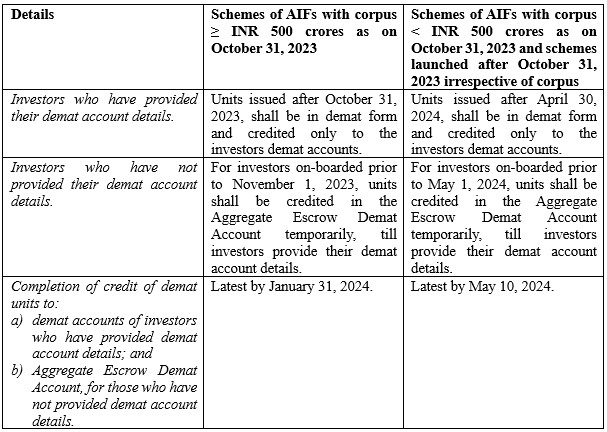National Company Law Appellate Tribunal, New Delhi (“NCLAT”) in the case of Beetel Teletech Limited v. Arcelia IT Services Private Limited [Company Appeal (AT)(Insolvency) No. 1459 of 2022], vide its order dated September 11, 2023, held that there is no bar on the initiation of Corporate Insolvency Resolution Process (“CIRP”) if a default is committed prior to period when Covid-19 pandemic was prevailing and continues during the period when Covid-19 pandemic was prevailing (“Section 10A Period”), since initiation of CIRP during Section 10A Period was suspended by introduction of Section 10A (Suspension of initiation of corporate insolvency resolution process) of the Insolvency and Bankruptcy Code, 2016 (“IBC”) and not prior to Section 10A Period.
Facts
A channel partner registration form was executed between M/s. Beetel Teletech Limited (“Operational Creditor/ Appellant”) and M/s. Arcelia IT Services Private Limited (“Corporate Debtor/ Respondent”), wherein both parties had agreed to work on mutually accepted terms and conditions. A purchase order dated October 25, 2019, was raised by the Corporate Debtor pursuant to which an invoice no. RV1927813879 dated December 31, 2019 of an amount of INR 1,32,45,904.84 (“Service Invoice”), was raised by the Operational Creditor for suppling goods and services. However, the payment by Corporate Debtor towards Service Invoice remained unpaid.
To recover the dues, ample reminders were made by the Operational Creditor and several meetings were held between the Corporate Debtor and the Operational Creditor. Further, the Operational Creditor issued a demand notice under Section 8 (Insolvency resolution by operational creditor) of IBC for recovering the dues. However, no reply to the demand notice was filed by the Corporate Debtor. As a result of which, an application for initiation of CIRP was filed under Section 9 (Application for initiation of corporate insolvency resolution process by operational creditor) of IBC on December 15, 2021 by the Operational Creditor against the Corporate Debtor (“Application”) and a reply to the Application was filed by the Corporate Debtor.
However, the Application was dismissed by National Company Law Tribunal, New Delhi (“NCLT”) as not maintainable, on the grounds that the interest claimed by the Operational Creditor falls during the period March 25, 2020 to March 24, 2021, for which no CIRP could have been initiated as per Section 10A of IBC and has also failed to establish beyond doubt that the unpaid operational debt was above the minimum threshold limit of INR 1 crore. Additionally, NCLT opined that part payments made by the Corporate Debtor was adjusted by the Operational Creditor towards other debts and not against the unpaid invoice which is claimed in the Application and there was no consistency in the treatment accorded to the part payments. Aggrieved by the said order, an appeal was filed before the NCLAT against the order of NCLT by the Operational Creditor.
Issues
Whether the interest accrued during Section 10A Period can be included while computing the INR 1 crore threshold limit.
Whether the part-payment received from the Corporate Debtor can be adjusted by the Operational Creditor towards other debts.
Arguments
Contentions of the Appellant:
It was contended by the Appellant that in terms of payment conditions followed by the two parties, the payments were to be made by the Corporate Debtor within 60 days from the date of invoice and the Corporate Debtor was liable to pay interest at the rate of 18% per annum if payment was not cleared within a time period of 60 days. The Service Invoice fell due for payment on February 29, 2020, for which certain payments were received from the Corporate Debtor, which were adjusted against the Service Invoice and other outstanding invoices. Despite these adjustments, certain payments remained outstanding towards the Service Invoice. Although the Appellant took up the matter with the Corporate Debtor for release of the outstanding debt, only part payments were made against the said invoice by the Corporate Debtor.
The Appellant also submitted that a demand notice was issued pursuant to Section 8 of IBC by the Appellant as a cheque issued by the Corporate Debtor got dishonoured for which the Corporate Debtor did not file any reply. After the demand notice was issued, two cheques amounting to INR 5 lakhs were issued by the Corporate Debtor which were adjusted by the Appellant against other pending invoices. However, the operational debt pertaining to the Service Invoice subsisted, resultantly an application under Section 9 of IBC was filed. As per the Appellant, the operational debt claimed is confined to the Service Invoice for an amount of INR 1,15,11,486 inclusive of principal amount of INR 1,01,80,986 along with an interest amount of INR 13,30,500 at the rate of 18% per annum. Therefore, the Appellant submitted that the default in payment arose before March 25, 2020 and the interest accruing on the principal amount should also be treated as a part of the operational debt and taken into consideration while computing the minimum threshold limit.
The Appellant contended that NCLT erroneously dismissed the application by the Appellant under Section 9 of IBC on the ground that the threshold limit of INR 1 crore is not fulfilled.
Contentions of the Respondent:
Despite the notice being served by NCLAT, there was no appearance made by anyone on behalf of the Corporate Debtor before the NCLAT since the first date of hearing which was on December 13, 2022.
Observations of NCLAT
NCLAT relied upon the judgement of the Supreme Court in the case of Ramesh Kymal v. Siemens Gamesa [Civil Appeal No. 4050 of 2020] wherein the Apex Court observed the object and intent underlying the insertion of Section 10A of IBC. It was held by NCLAT that Section 10A of IBC signifies that no application/ proceedings under Sections 7, 9 and 10 can be initiated for any default in payment which is committed during Section 10A Period. However, the said bar for initiation of CIRP is not applicable in respect of those defaults which are committed prior to the Section 10A Period and continues in the Section 10A Period. It was observed by NCLAT that the aim and objective of Section 10A of IBC was to protect a corporate debtor from any insolvency application against it for any default committed during the period when Covid-19 pandemic was prevailing. It was never intended to cover any default which occurred before Section 10A Period and continuing thereafter.
NCLAT noted that in the present case, the default has been committed by the Corporate Debtor since February 29, 2020, which is prior to commencement of Section 10A Period. Hence, the default was committed before the bar of Section 10A of IBC came into play and the Corporate Debtor is not entitled to claim the benefit of Section 10A Period. Furthermore, NCLAT held that since the default was committed prior to Section 10A Period and the liability for payment of interest having clocked prior to Section 10A Period, the opinion of NCLT that the liability of interest which accrued during Section 10A Period should be ignored or should not be computed for triggering CIRP, is misconceived.
In respect of the issue that whether the Operational Creditor can adjust part-payments which it has received from the Corporate Debtor towards other debts, NCLAT relied upon Section 60 (Application of payment where debt to be discharged is not indicated) of the Indian Contract Act 1872, and observed that if a debtor makes any payment without any appropriation, then the creditor can use his discretion to wipe out any of the remaining debt(s) which is/are due. Hence, if the debtor has not indicated the manner in which the debt is to be discharged, the creditor has the right of appropriation and therefore, the creditor has the scope to exercise his right in such a manner which puts him in the most advantageous position. Additionally, NCLAT held that it is a well settled business practice that in a debt where the principal amount is outstanding and interest has also accrued on the debt, sums paid by the debtor is applied by the creditor first to the interest.
NCLAT observed that payments received by the Operational Creditor have been duly adjusted against invoices in addition to the Service Invoice which were all pending for payment. Additionally, NCLAT observed that NCLT was unreasonable to hold that there is inconsistency in the pattern adopted by the Operational Creditor while adjusting payments received against outstanding dues as NCLT passed the order without any explanation as to how the action of adjusting the payments received by the Operational Creditor has contravened any provision contained in the Indian Contract Act, 1872.
Decision of NCLAT
NCLAT held that the order of NCLT is not tenable. Therefore, NCLAT allowed the appeal of the Operational Creditor and set aside the order of NCLT.
Further, NCLAT revived the application for CIRP filed by the Operational Creditor under Section 9 of IBC and remanded it back to NCLT for its consideration as per the law.
VA View:
The observation of NCLAT has brought into light the significance of the aims and objective of Section 10A of IBC which was to grant protection to a corporate debtor from any insolvency application against it for any default committed during the period when Covid-19 pandemic was prevailing and not to cover any default which occurred before Section 10A Period and continuing thereafter.
NCLAT has also emphasized on the fact that there must be no conflict between the provisions of the Indian Contract Act, 1872 and the spirit of IBC; and gave remarkable significance to both the provisions of the Indian Contract Act, 1872 as well as IBC and thus observed that neither of the statutes should not encroach upon the sphere of the other legislation.
For any query, please write to Mr. Bomi Daruwala at [email protected]






